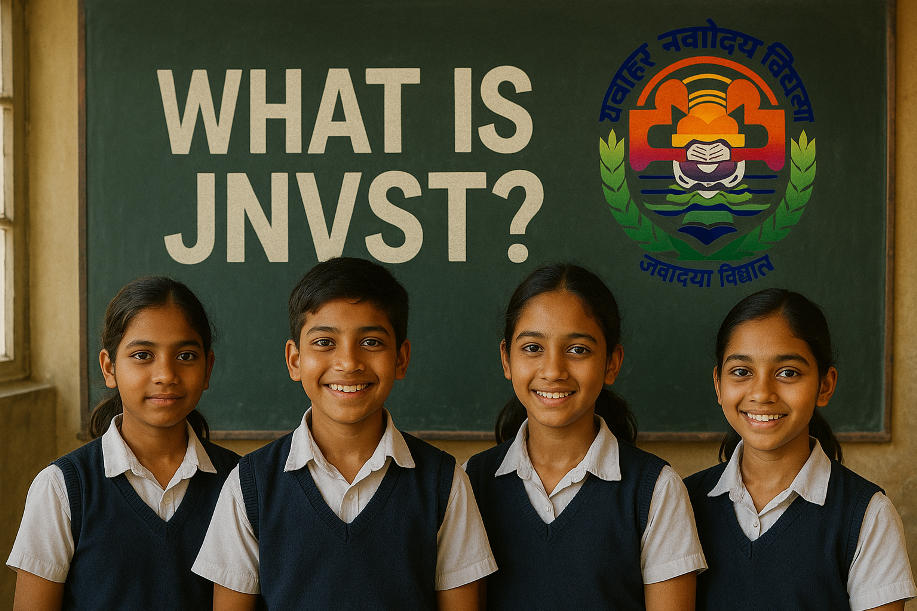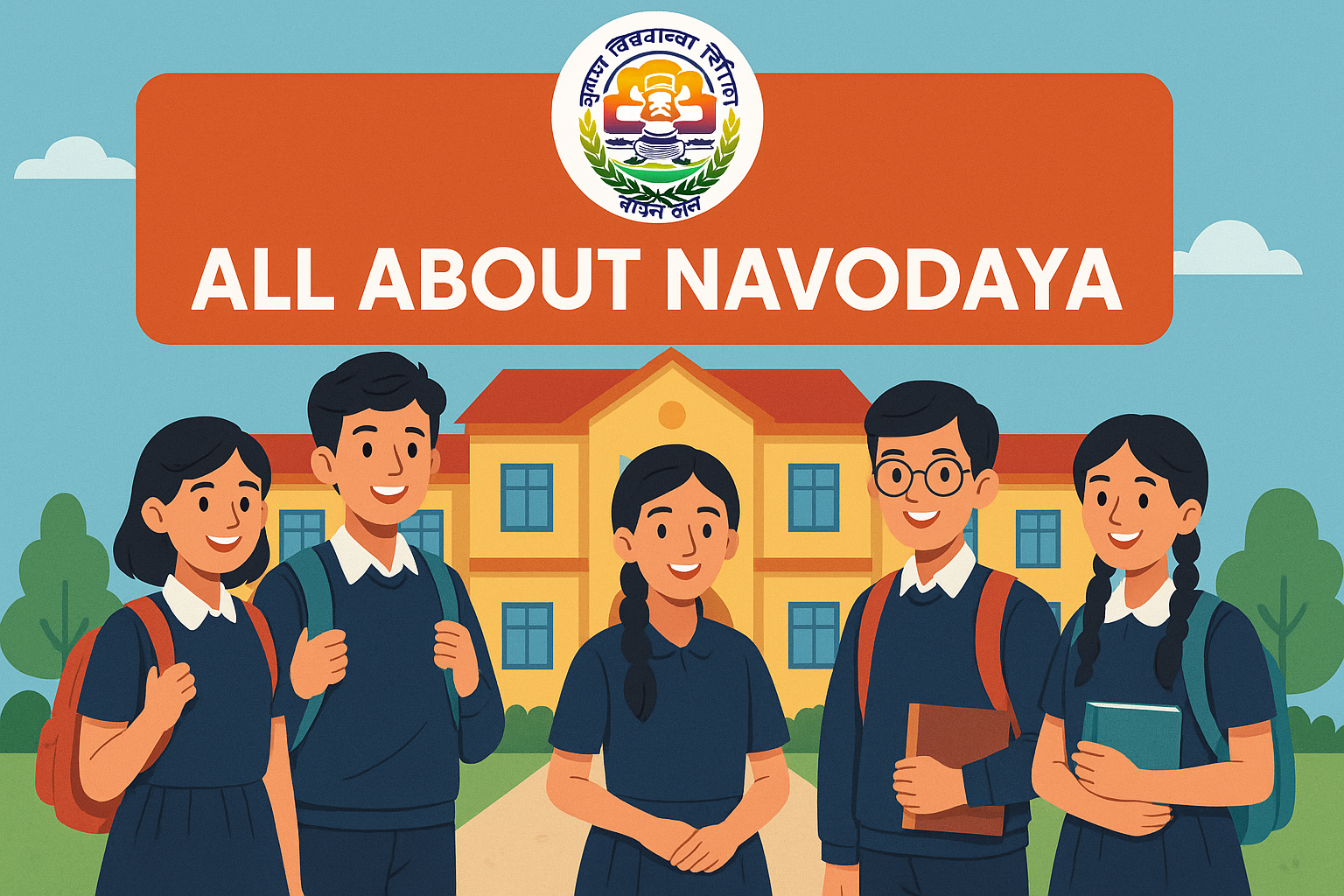
what is JNVST?
For many bright young minds in rural India, a better future is not always guaranteed. However, one national-level entrance exam has been quietly changing this reality for thousands of students every year. It’s called the Jawahar Navodaya Vidyalaya Selection Test (JNVST) — and for many, it is not just a test, but a turning point.
But what exactly is JNVST? Who is it meant for? How does it work? And why is it considered one of the most inclusive and empowering educational initiatives in India?
Let’s explore this powerful system that’s helping to unlock the potential of India’s rural talent — one child at a time.
An Overview of JNVST
The Jawahar Navodaya Vidyalaya Selection Test (JNVST) is an entrance exam conducted by the Navodaya Vidyalaya Samiti (NVS) under the Ministry of Education, Government of India. This test is used to select students for admission into Class 6 in Jawahar Navodaya Vidyalayas (JNVs).
These schools are fully residential, co-educational, and affiliated with the CBSE (Central Board of Secondary Education). They are funded by the central government, and all facilities — including education, lodging, boarding, and uniforms — are provided free of cost.
JNVST is mainly conducted for rural students, and a minimum of 75% of the seats are reserved for children from rural areas, ensuring that the opportunity reaches those who need it the most.
A Mission Inspired by Visionaries
The idea of Navodaya Vidyalayas was inspired by former Prime Minister Rajiv Gandhi, who envisioned quality education for every child, regardless of their background. The concept was first introduced under the National Policy on Education, 1986, and was later implemented through the Navodaya Vidyalaya Samiti.
The goal was simple yet ambitious:
To identify talented children in rural areas and provide them with the best education India has to offer, comparable to the best schools in cities — at no cost.
How JNVST Works
JNVST is held every year for students seeking admission to Class 6, although lateral entries are also allowed for Class 9 and Class 11, depending on the availability of seats.
Eligibility Criteria:
- The student must be studying in Class 5 in a recognized school.
- The student must be between 9 to 13 years of age.
- At least 75% of seats are reserved for students from rural areas.
- Reservations are also made for SC, ST, OBC, and disabled children.
Exam Structure (for Class 6):
The JNVST exam is designed to be non-verbal, objective, and culturally neutral, so that no child is disadvantaged due to language or regional factors.
| Section | Subjects | Questions | Marks |
|---|---|---|---|
| I | Mental Ability Test | 40 | 50 |
| II | Arithmetic Test | 20 | 25 |
| III | Language Test (English/Hindi/Regional) | 20 | 25 |
| Total | 80 | 100 |
- The exam is usually conducted in the regional language, and students are allowed to choose their preferred language.
- The duration is 2 hours, and there is no negative marking.
Facts and Figures
- As of 2024, there are 661 Jawahar Navodaya Vidyalayas across 27 states and 8 union territories in India.
- More than 30 lakh (3 million) students apply for JNVST every year, and about 50,000 to 60,000 students are selected for Class 6.
- Nearly 80% of students enrolled in JNVs are from rural areas.
- The success rate of JNV students in CBSE board exams and national competitive exams (like NEET, JEE) is consistently above average.
These numbers speak volumes. They show that talent is not limited by geography, but opportunity often is — and JNVST has been changing that.
Life Inside a JNV
Life at a Jawahar Navodaya Vidyalaya is designed to promote holistic development. Students stay on campus in dormitories, attend regular CBSE-based academic classes, and also participate in sports, arts, cultural events, NCC, and social service activities.
- Discipline and routine are emphasized, and students are encouraged to become self-reliant.
- Teachers live on campus too, offering round-the-clock guidance and mentoring.
- The atmosphere is often described as a second home, where friendships, values, and lifelong lessons are formed.
Many alumni proudly recall their days in JNV as the most transformative period of their lives.
Why JNVST Matters
JNVST is not just an exam. It is a gateway to a better future — especially for children who may otherwise be denied quality education due to financial or geographical barriers.
Here’s why JNVST stands out:
- Equity in education: Rural students get the same level of education as their urban counterparts.
- Cost-free access: Everything — from books to boarding — is provided at no cost.
- Merit-based: Selection is purely based on performance in the test.
- National integration: Students from different states are exchanged through migration programs to promote unity.
Challenges and Hopes
While the system is admired, it is not without challenges:
- Awareness about JNVST is still low in many remote areas.
- The selection process is highly competitive.
- Infrastructure gaps exist in some schools.
However, with continued support and better outreach, more lives can be touched. The impact made by JNV alumni in various fields — from civil services to science, sports to literature — continues to inspire.
Final Thoughts
In a country as vast and diverse as India, where inequality often begins in the classroom, the Jawahar Navodaya Vidyalaya Selection Test stands as a symbol of hope. It ensures that every child, regardless of income or address, has a fair chance to succeed — if they have the potential.
So, when we ask “What is JNVST?”, the answer is simple:
It is a test. But it is also a door — a door to opportunity, to transformation, and to a brighter India.



